Sign up. Be inspired. Get clicking.
USA initiative for climate change: national action plan
8 January 2023
The United States has launched a comprehensive approach to address its climate challenges, though some specific references in your original paragraph may need clarification or adjustment.
The Biden-Harris administration has introduced numerous initiatives to tackle climate issues, including a National Climate Resilience Framework. This framework focuses on adapting infrastructure and policy to reduce vulnerabilities while investing heavily in renewable energy and innovative technologies. For example, federal agencies, under Executive Order 14008, are coordinating efforts to reduce emissions, improve energy efficiency, and enhance resilience across.
The 2024-2027 Climate Adaptation Plans, released by over 20 federal agencies, detail how the U.S. aims to cut emissions, support clean energy development, and bolster disaster resilience. This effort is also tied to larger frameworks like the Pathways to Net-Zero Emissions by 2050, which lays out strategies for decarbonising electricity, electrifying transportation, and reducing energy waste.
Grassroots participation and local projects also play a critical role. Community-focused programmes aim to involve residents in initiatives like afforestation, clean transport systems, and local energy projects. These efforts underline the importance of collaboration between government bodies, private entities, and the public
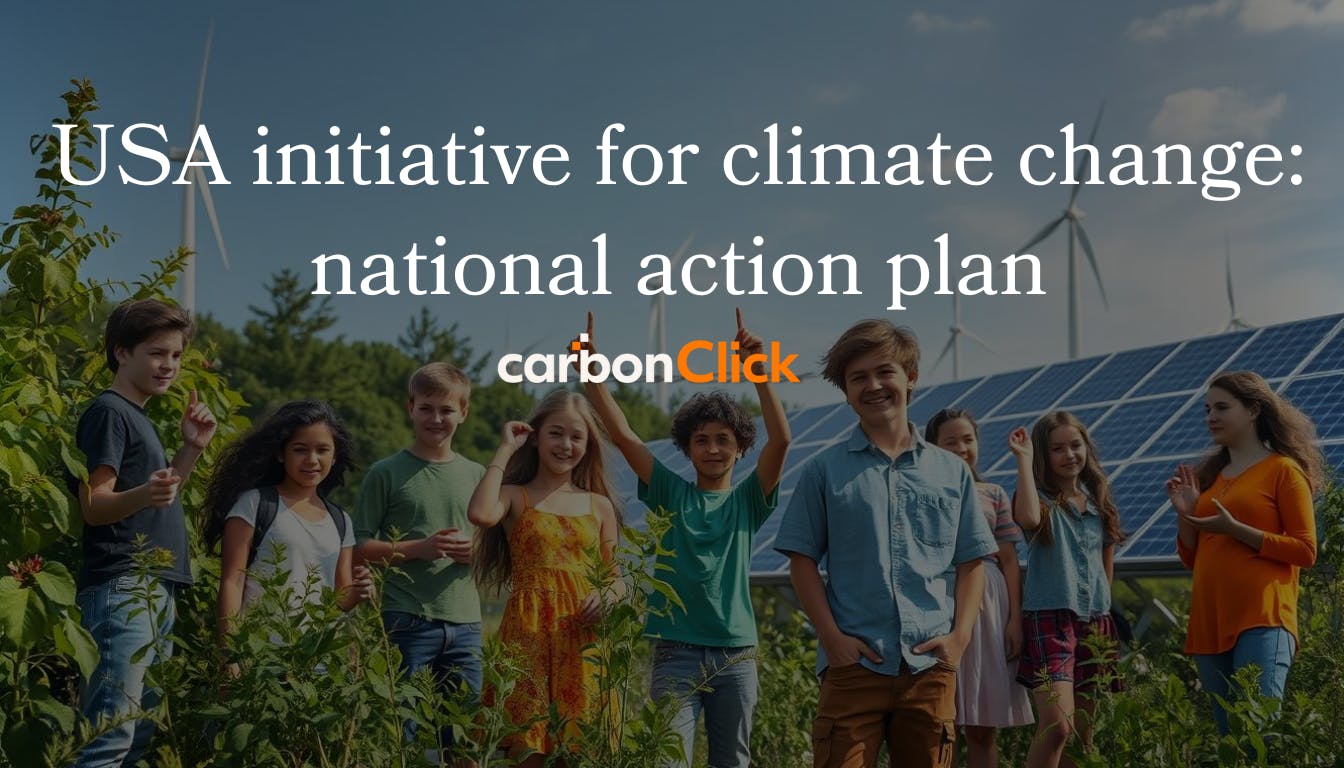
Overview of the USA climate change initiative
The USA's efforts to address climate challenges involve a comprehensive, nationwide strategy encompassing policies, technological advancements, and community initiatives. Central to this approach are measures to reduce carbon emissions, with particular focus on sectors such as transportation, energy, and agriculture. This includes transitioning to clean energy, increasing energy efficiency, and adopting sustainable land-use practices.
The initiative also prioritises public engagement and education, aiming to foster a culture of environmental stewardship. By providing resources and encouraging community-level involvement, the programme seeks to empower individuals to contribute to these goals in meaningful ways.
Furthermore, significant investments have been directed towards infrastructure improvements and technological innovation, such as expanding electric vehicle networks and supporting carbon capture technologies. Policies like the Inflation Reduction Act and executive orders promote these advancements and align federal and state-level efforts.
This unified approach underscores the importance of collaboration across governmental agencies, private organisations, and the public to achieve a more sustainable future
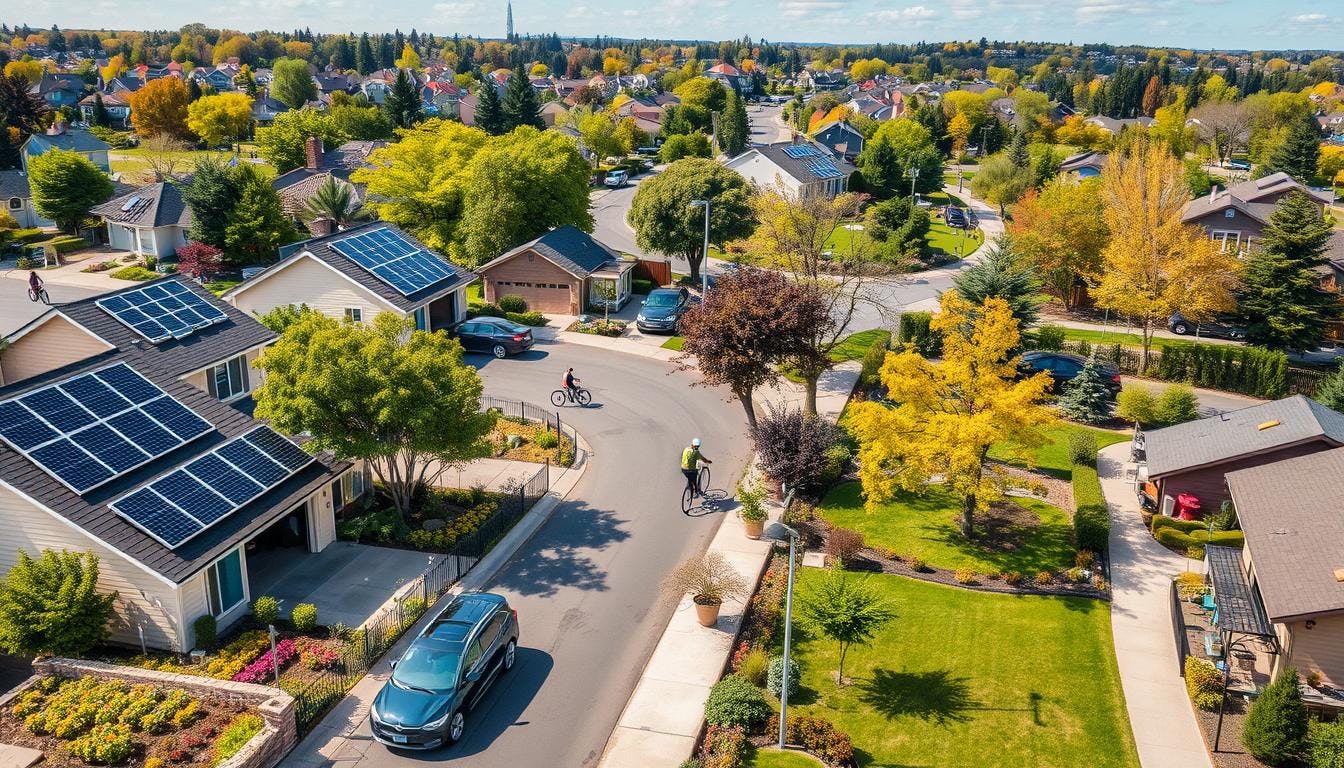
Historical context of climate change in the USA
The United States’ journey in addressing environmental challenges began in earnest during the Progressive Era, with figures like John Muir and President Theodore Roosevelt playing pivotal roles. Muir's advocacy led to the establishment of Yosemite National Park in 1890, driven by his belief in preserving nature for its intrinsic value. Roosevelt, often referred to as the first "conservation president," expanded federal protection over vast areas of land and natural resources. He established the U.S. Forest Service, signed into law the creation of five national parks, and utilised the Antiquities Act to designate numerous national monuments, shaping the conservation movement significantly.
In the 20th century, the creation of the Environmental Protection Agency (EPA) in 1970 was a landmark development. This agency was tasked with addressing pollution and safeguarding air, water, and land, following increasing public concern over environmental degradation. The agency's foundation was part of a broader national awakening spurred by environmental disasters and public advocacy.
The 2015 Paris Agreement marked a contemporary milestone, reaffirming the United States' role in global climate initiatives. While progress has been made, challenges persist, including debates over energy policies and balancing industrial activity with sustainability goals. Renewed efforts now focus on advancing renewable energy and encouraging community-led initiatives.
This history underscores the enduring importance of both individual and collective action in shaping environmental progress. Each milestone reflects a commitment to addressing environmental concerns, reminding us of the need for continuous innovation and participation.
Current climate policies in the USA
The United States has made significant efforts to address environmental challenges through comprehensive policy reforms at federal, state, and local levels. At the federal level, initiatives like the Inflation Reduction Act and the Clean Air Act have driven reductions in greenhouse gas emissions and promoted renewable energy adoption. The Environmental Protection Agency (EPA) enforces regulations targeting emissions from transportation, energy, and industrial sectors. Notably, the Inflation Reduction Act includes incentives for clean energy development and electric vehicles, alongside measures to enhance energy efficiency.
State-level actions often extend beyond federal requirements. For instance, California aims for carbon neutrality by 2045, with stringent vehicle emission standards influencing other states. New York has set an ambitious goal to source 70% of its electricity from renewables by 2030. States like Massachusetts and Washington also lead with innovative carbon pricing and clean energy initiatives.
Local governments play a crucial role by promoting sustainable urban development. Efforts include public transportation improvements, renewable energy projects, and efficient building designs. These actions collectively contribute to reducing the nation's environmental impact.
While these policies mark progress, challenges persist, including coordination across jurisdictions and addressing entrenched reliance on fossil fuels. Enhanced collaboration between governments and active public participation are essential to achieving long-term environmental goals.
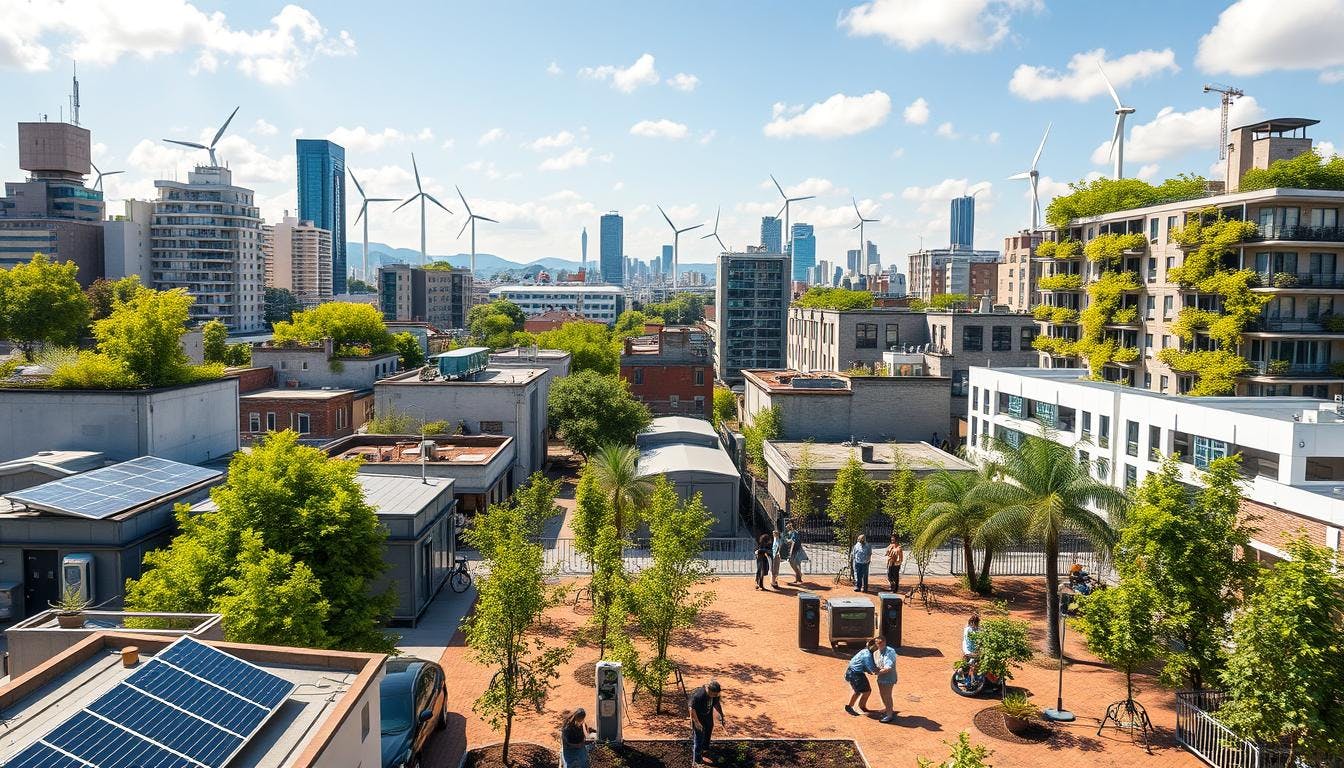
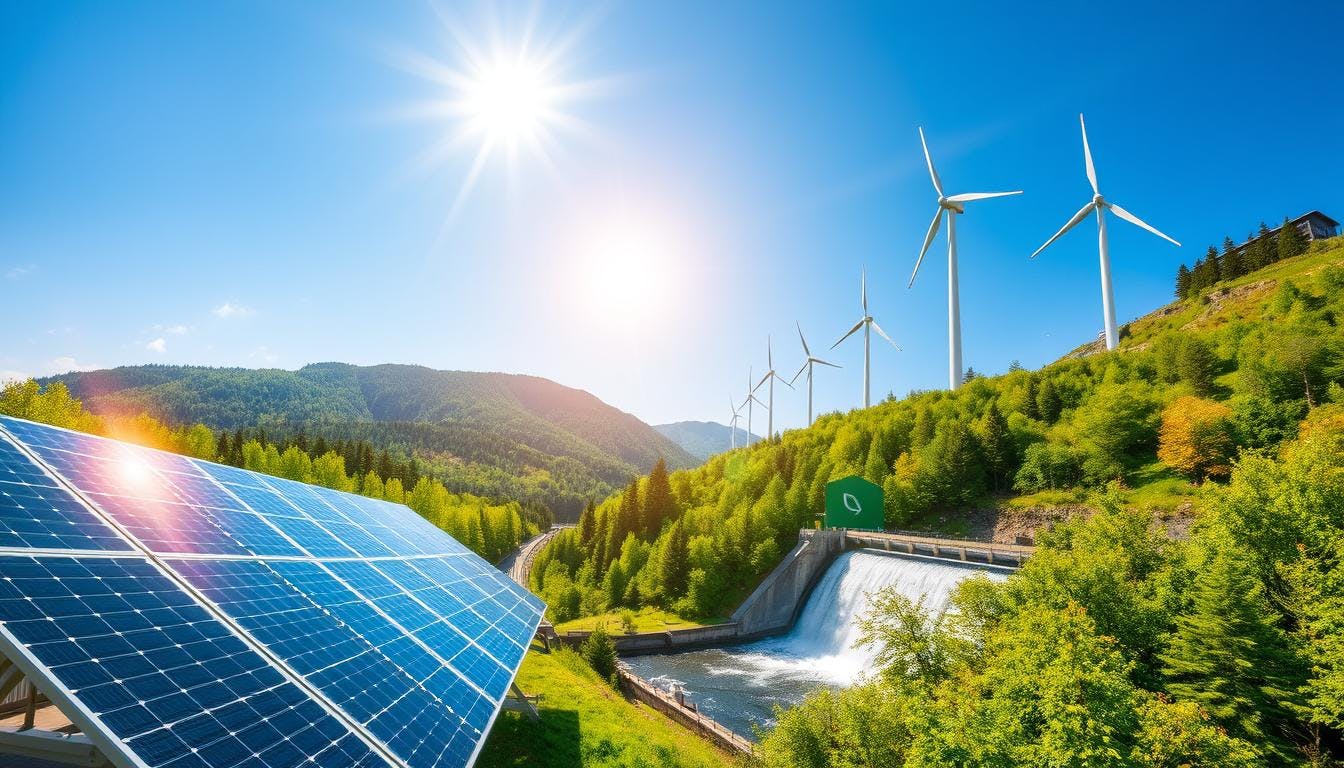
Role of renewable energy in the initiative
The USA is increasingly turning to renewable energy to address the challenges posed by climate change. Significant investments have been made in solar, wind, and geothermal energy projects. For instance, solar power is projected to drive most of the growth in U.S. electricity generation through 2025, thanks to expanding rooftop solar initiatives and large-scale solar farms. Wind farms and geothermal energy developments also continue to grow, particularly in states like California and Nevada.
These efforts have been bolstered by federal incentives and funding, encouraging both individuals and companies to adopt cleaner energy solutions. State and local governments also play a critical role by promoting public awareness and implementing energy-efficient infrastructure projects.
This shift not only aims to lower harmful emissions but also empowers individuals to understand their environmental impact, further driving the adoption of sustainable practices across communities
Community engagement and activism
In the United States, grassroots movements and community projects have played a vital role in addressing climate challenges. These efforts have increased public awareness, influenced policy changes, and encouraged sustainable living practices across the country. The climate justice movement, in particular, has been instrumental in amplifying the voices of communities most affected by environmental challenges, advocating for equitable solutions that consider diverse regional needs.
Local initiatives have included urban gardening, renewable energy cooperatives, and waste-reduction programmes, empowering communities to adopt lower-impact lifestyles while fostering resilience. These grassroots projects have inspired neighbouring areas to implement similar solutions, creating a ripple effect of positive action. This collective drive highlights the importance of community-led change in building a sustainable future for the nation.
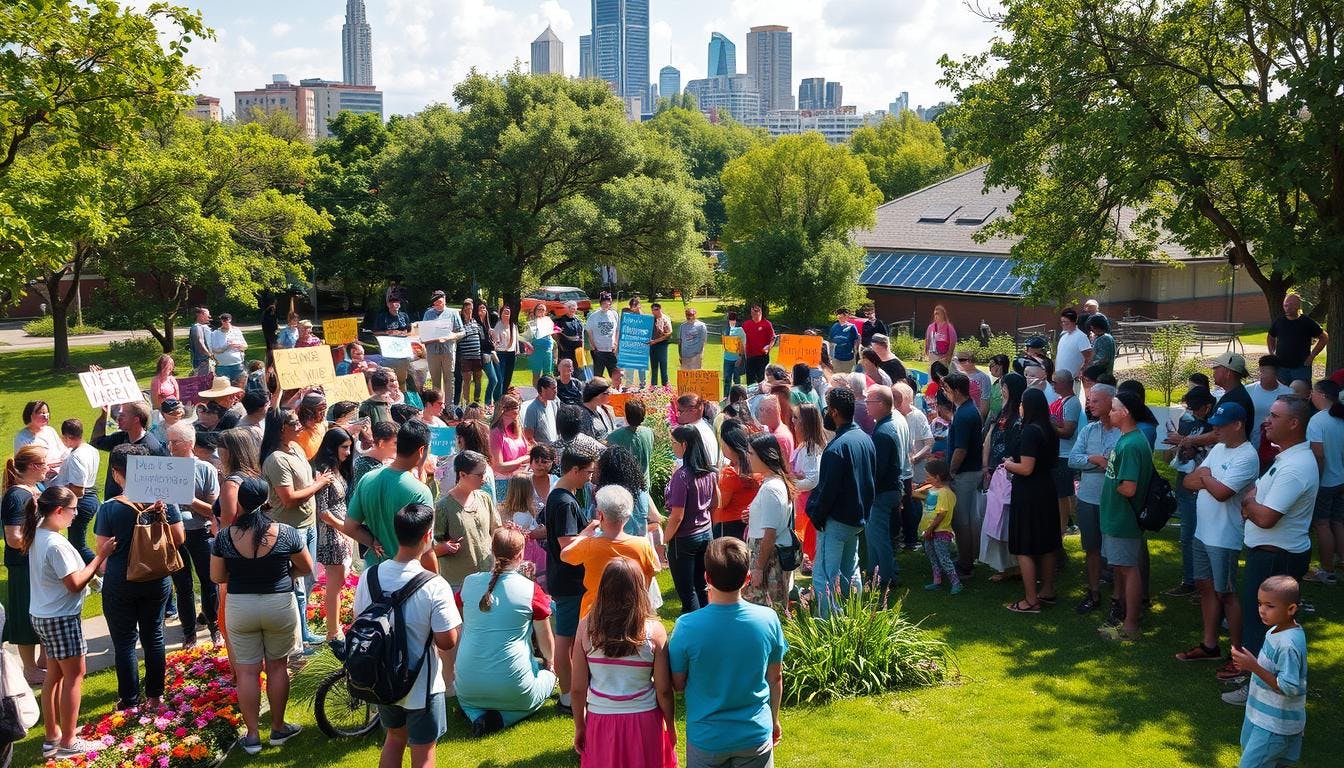

Economic impact of climate change initiatives
The United States is taking significant steps to address climate concerns, highlighting the economic implications of this transition. Adopting renewable energy practices and low-carbon technologies is expected to stimulate job creation in emerging industries, though it also requires managing the costs of shifting away from traditional energy sources.
Investments in solar, wind, and other renewables could potentially generate millions of jobs, from manufacturing energy-efficient technologies to installing renewable energy systems. Research indicates that these industries could contribute significantly to local economies, creating opportunities nationwide. For instance, federal policies like the Inflation Reduction Act aim to provide financial incentives for renewable projects, particularly in regions historically reliant on fossil fuels.
However, the initial transition is capital-intensive. Homes and businesses face upfront expenses to adopt more sustainable technologies, such as energy-efficient appliances or solar power systems. Managing these costs through subsidies and public-private partnerships is essential to realise the economic benefits over time.
Ultimately, the United States' efforts are a long-term investment. Although the transition involves significant costs, the potential benefits include reduced emissions, job creation in low-carbon sectors, and enhanced energy resilience. These outcomes are critical for fostering economic growth while addressing environmental challenges.
Impact on biodiversity and ecosystems:
The United States continues its initiatives to conserve biodiversity and protect ecosystems amidst climate challenges. Policies focus on restoring habitats and regulating land use to shield vulnerable species. Local and federal projects, including wetland restoration and sustainable forestry, aim to reduce the impact on wildlife.
Grassroots activism has also been instrumental, with communities engaging in tree planting, habitat restoration, and pollution control. These efforts align with broader national objectives, ensuring the preservation of ecosystems for future generations while promoting sustainable practices.
Collaboration with international organisations
The USA is actively engaged in global climate efforts, working alongside international partners to address climate change. It plays a key role in the Paris Agreement, a binding treaty designed to limit global warming, where it collaborates with nations through the United Nations Framework Convention on Climate Change (UNFCCC). This cooperation is essential in advancing global climate policies and in sharing best practices.
In addition to the UNFCCC, the USA collaborates with the International Energy Agency (IEA) to promote renewable energy adoption and accelerate clean energy technologies. These partnerships are vital for enhancing the global response to the climate crisis.
Moreover, the USA partners with various non-governmental organisations (NGOs) and civil society groups worldwide. These collaborations strengthen the climate justice movement, ensuring that vulnerable communities are heard and that solutions are inclusive. This united effort helps to foster sustainable development globally, as the USA contributes to mitigating the effects of climate change and advancing climate justice.
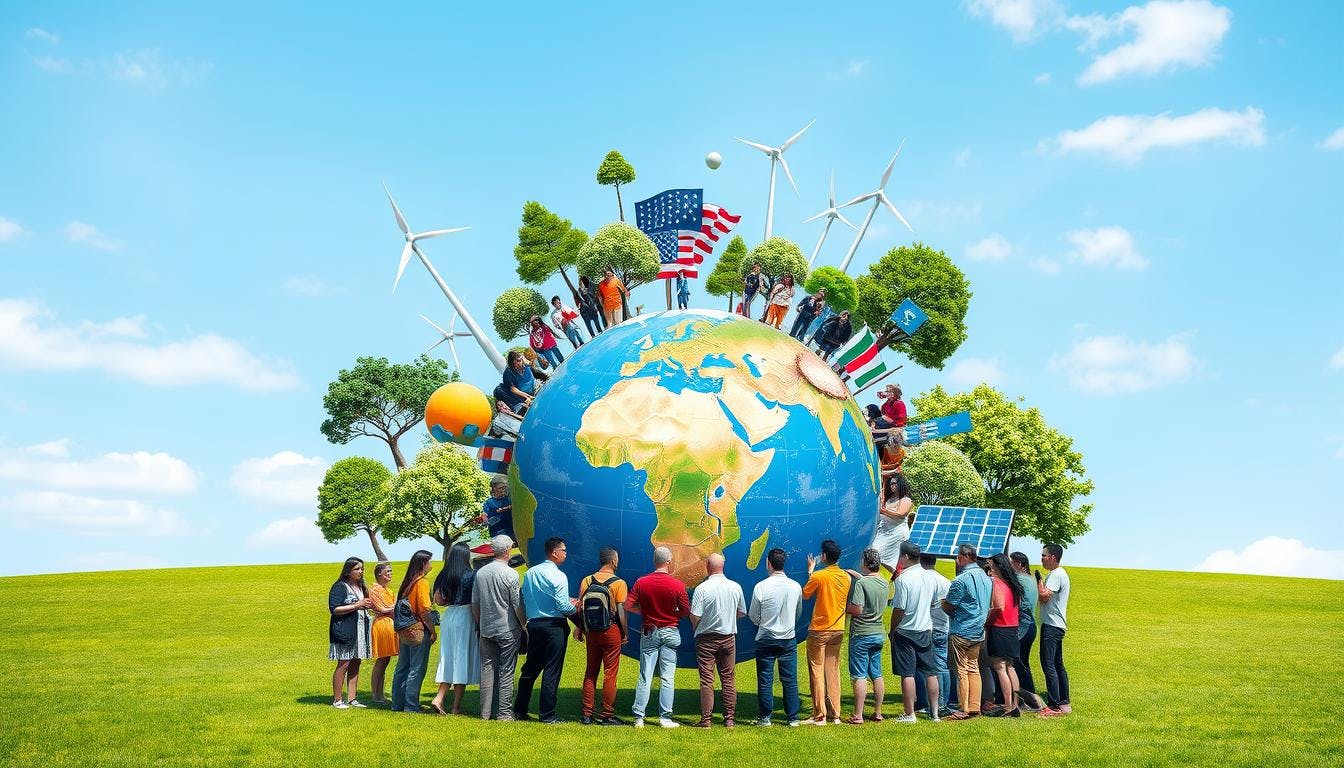
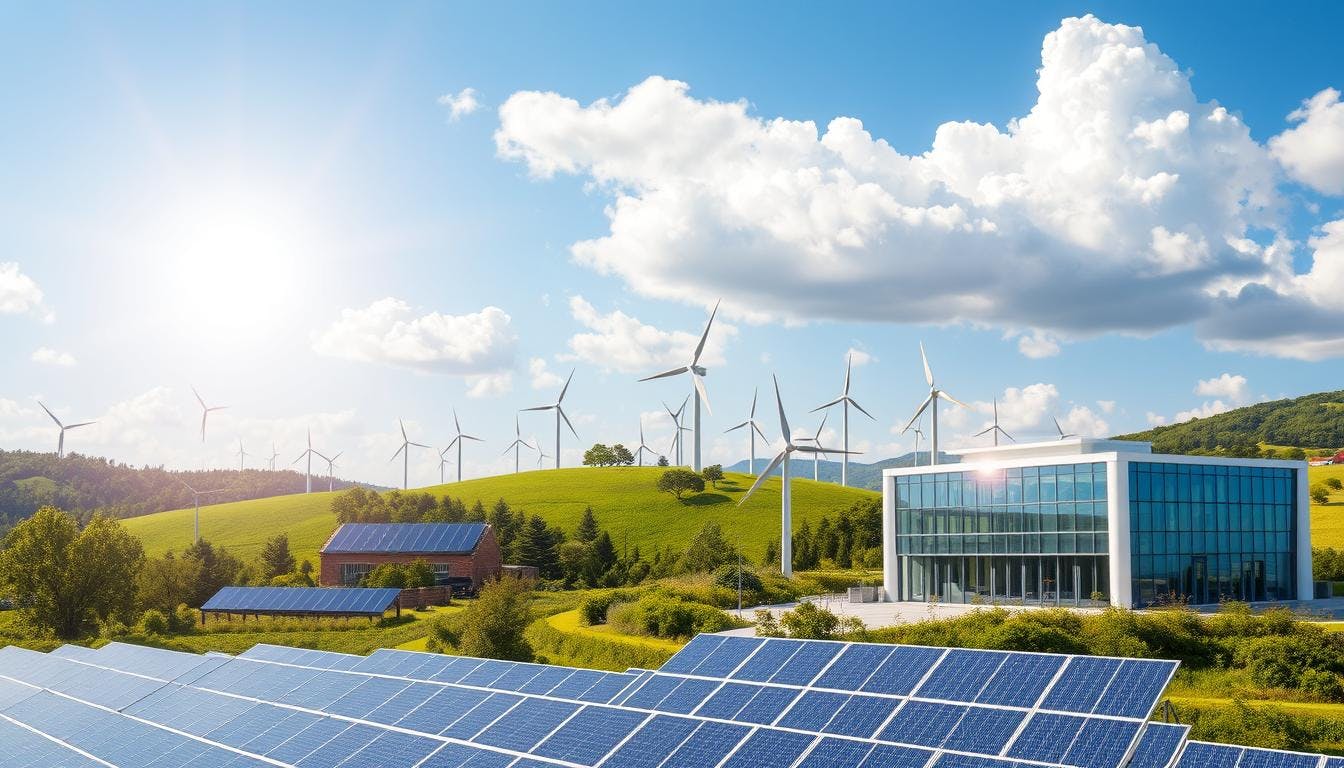
Technology and innovation in climate solutions
The United States is actively working to address climate change, using innovation and technology to create sustainable solutions. Renewable energy sources such as solar, wind, and geothermal are at the core of these efforts, with increasing adoption driven by collaboration among government, businesses, and educational institutions. This shift is significantly reducing carbon emissions and advancing towards a more sustainable future.
However, the focus extends beyond just energy. The USA is exploring new methods to lower carbon footprints in various sectors, including through the development of smart cities and the rise of electric vehicles. These efforts demonstrate how the country is working to reduce environmental impact across different aspects of life.
By leveraging technology and innovation, the USA is providing hope in tackling environmental challenges. The nation’s commitment to sustainability and its forward-thinking approach underscore its leadership role in addressing climate change globally.
The role of businesses in the USA initiative
Businesses in the United States are playing a crucial role in addressing climate change. Many major companies are now prioritising sustainable practices and initiatives, recognising their responsibility to contribute positively to the planet.
These companies are adopting renewable energy solutions and reducing carbon emissions, demonstrating their commitment to environmental protection. These efforts benefit the planet while also strengthening their businesses.
Moreover, businesses are not only changing their internal practices but also collaborating with local organisations, charities, and governments to support sustainable projects. They are encouraging their suppliers to adopt more sustainable practices as well, spreading positive change throughout the supply chain.
By taking the lead in sustainability, American companies are driving significant change. Their actions help preserve the environment and inspire others to embrace more sustainable lifestyles, leading to widespread positive impact.
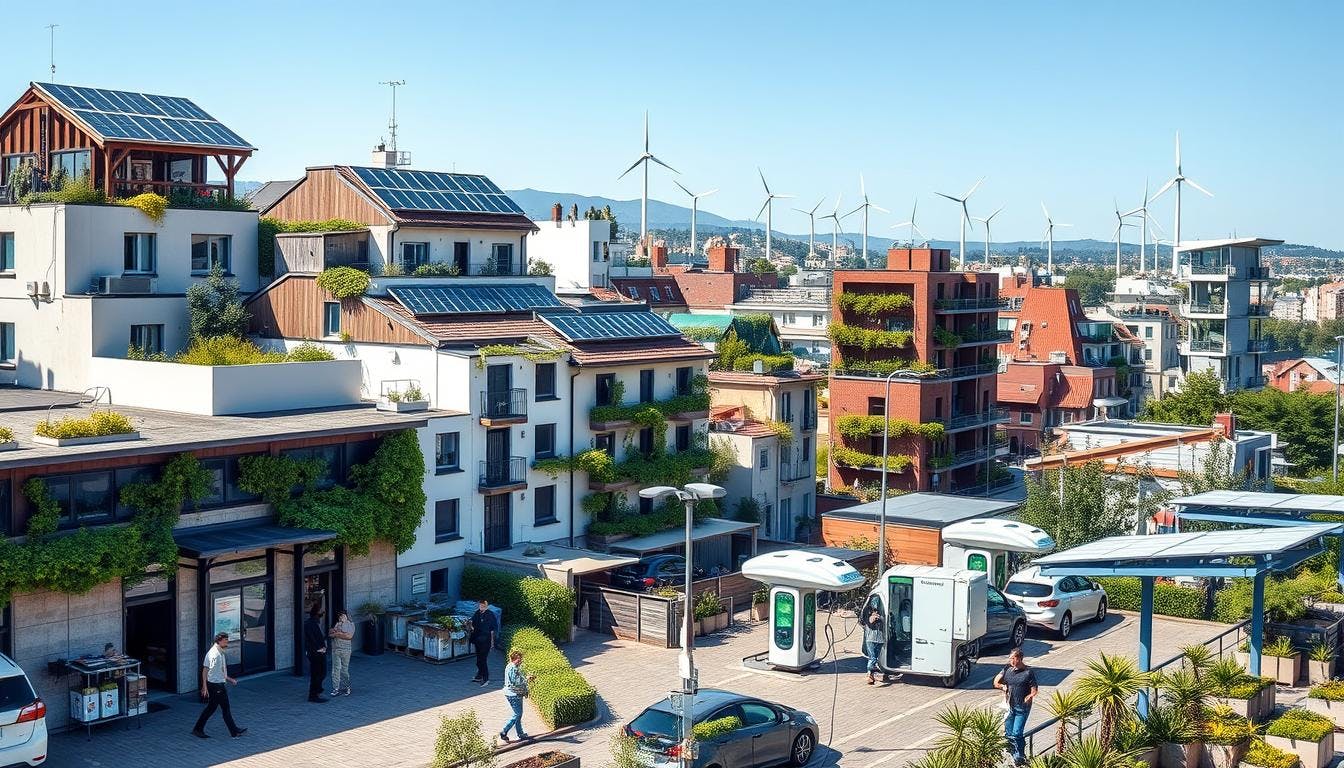
Future goals and initiatives
The USA is stepping up its efforts to tackle climate change with renewed commitment. Recent policy changes and an increased push for renewable energy are setting the stage for a more sustainable future. The country is preparing to launch several new initiatives aimed at reducing its environmental impact.
The focus will be on stricter climate policies and increased incentives for reducing emissions. The government aims to make renewable energy sources like solar and wind power more accessible, ensuring that the USA remains a leader in the clean energy sector.
There will also be a stronger emphasis on community involvement and activism. By encouraging public participation, the government hopes to build broad-based support for sustainability initiatives. This combination of governmental action and community engagement is essential for achieving the nation's environmental goals.
17 South Street
Auckland 1010
New Zealand
info@carbonclick.com- -
- X
Subscribe now to stay up to date with CarbonClick, carbon offsetting and climate action.
By signing up you agree to our Privacy Policy.


